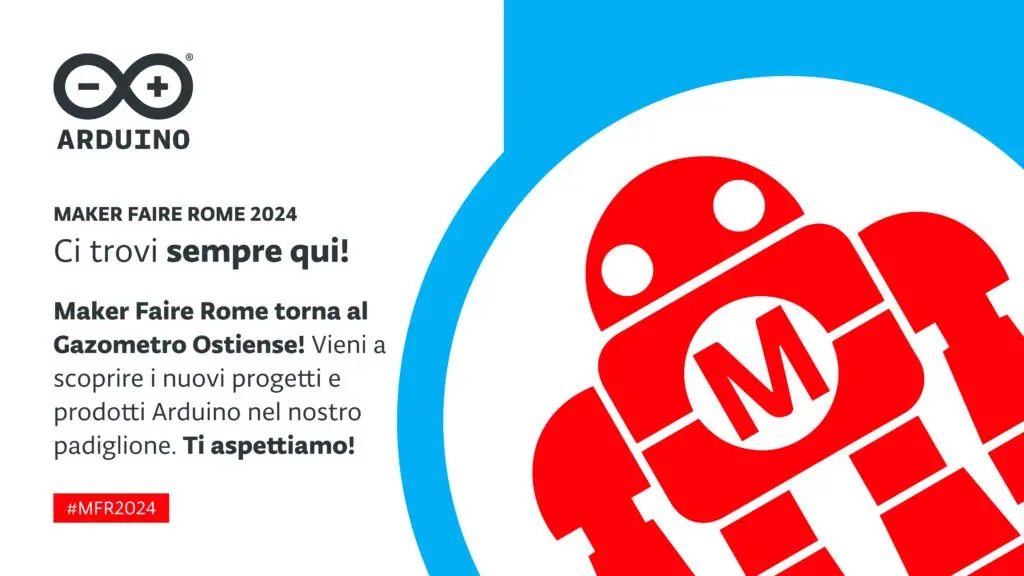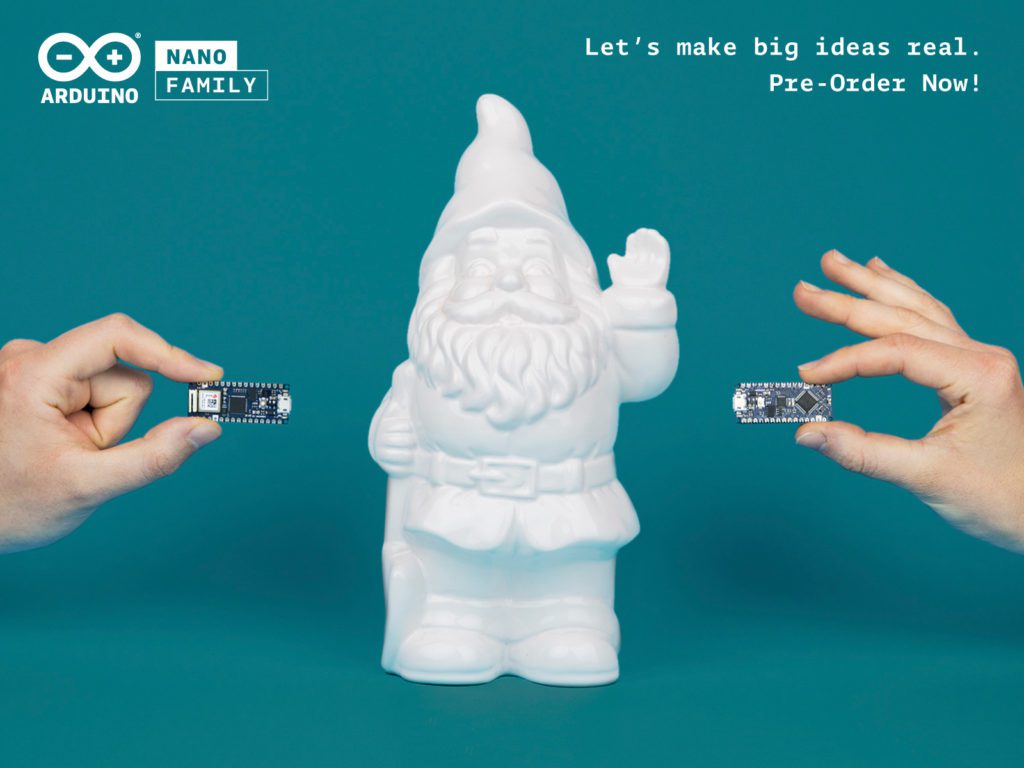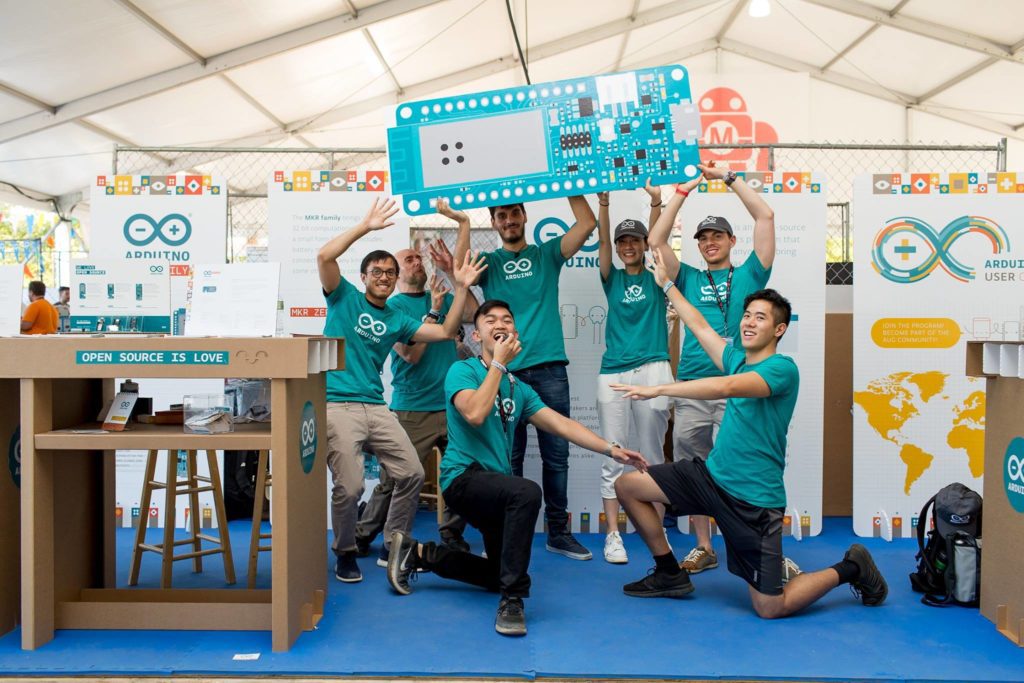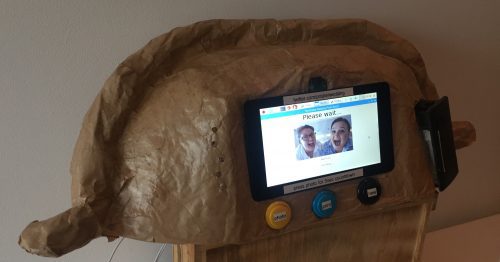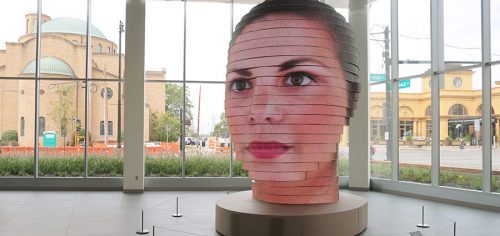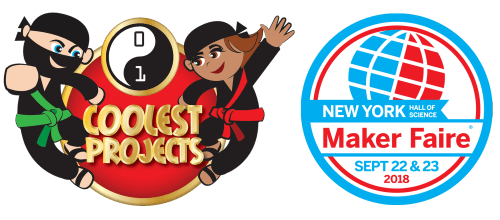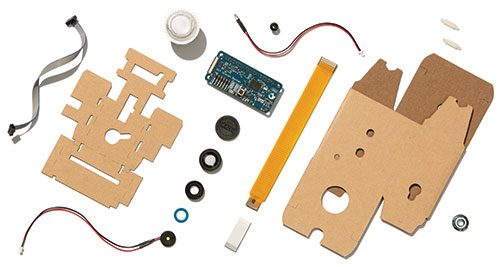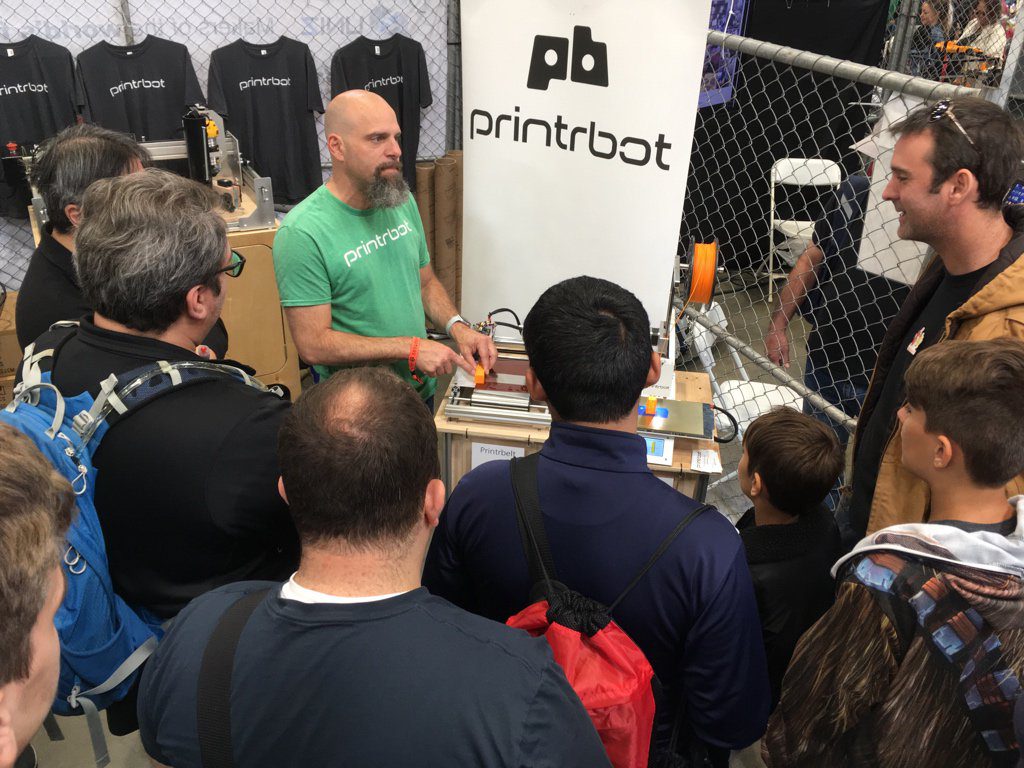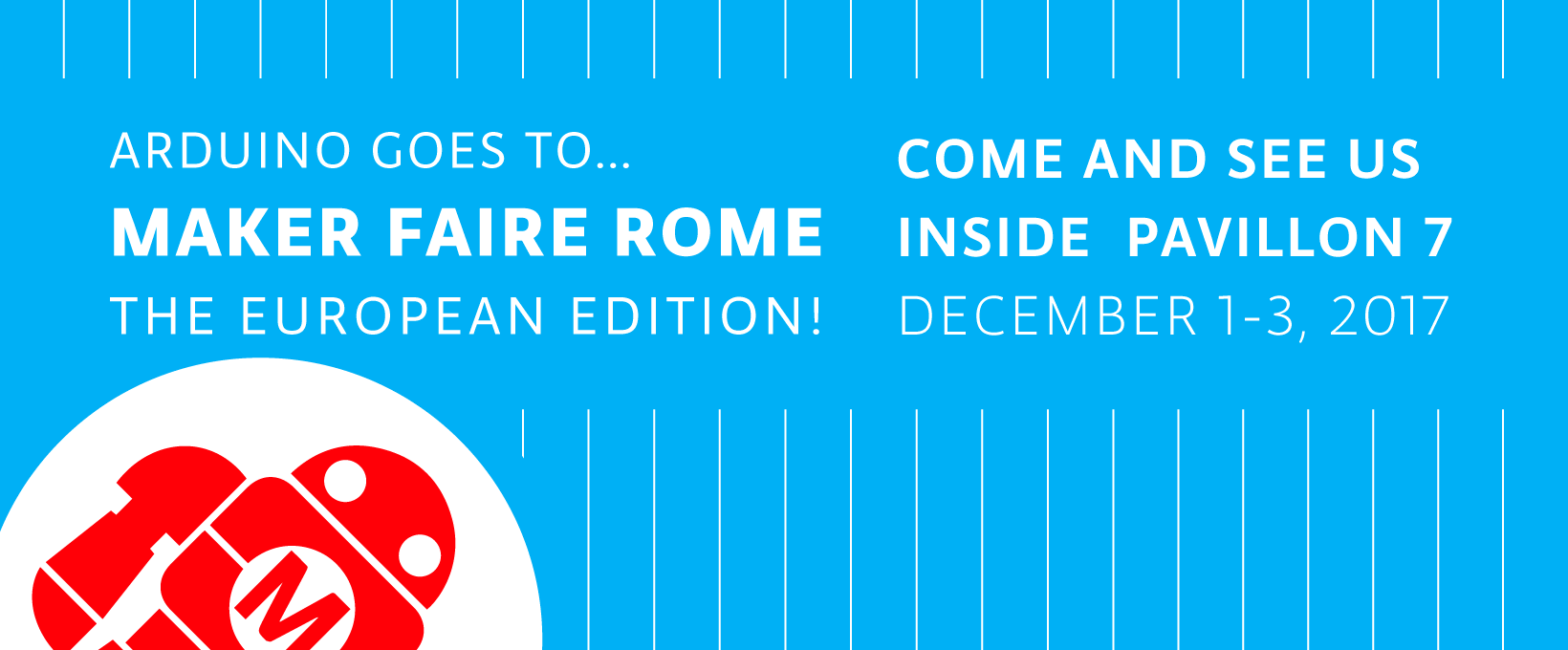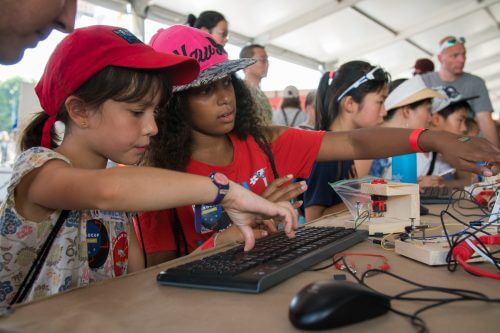Schlagwort: Maker Faire
-

Let’s play at the Maker Faire Rome 2024!
Reading Time: 2 minutesWe’re excited to be back at Maker Faire Rome as a Gold Sponsor of the 12th edition (October 25-27, 2024), with some memorable experiences lined up for all makers, innovators, and creators who attend! Learn by playing at our booth Visit us at the fair for a playful, interactive experience where you…
-

Calling volunteers for Maker Faire Rome 2019
Reading Time: 2 minutesCalling volunteers for Maker Faire Rome 2019 Arduino Team — October 8th, 2019 Planning to attend Maker Faire Rome later this month? We’re currently seeking volunteers to join our team during the event—staffing tables and displays, helping with demos, and providing technical assistance when necessary. If you volunteer with us for one…
-

What’s new at Maker Faire Bay Area 2019
Reading Time: 3 minutesIt wouldn’t be a Maker Faire Bay Area without some exciting announcements! A New Nano Family Designed with makers in mind, the new Nano represents a small, powerful and affordable solution for everyday projects. Retaining Arduino’s quality and reliability, they make it easier than ever to turn your project ideas into reality.…
-

Join us at Maker Faire Bay Area 2019!
Reading Time: 2 minutesJoin us at Maker Faire Bay Area 2019! Arduino Team — May 16th, 2019 We are just few hours away from Maker Faire Bay Area 2019, where we will be partnering with Microchip in the Expo Hall (Zone 2). Those heading to San Mateo over the weekend will want to swing by…
-

Maker Faire Bay Area 2019: Call for volunteers
Reading Time: 2 minutesMaker Faire Bay Area 2019: Call for volunteers Arduino Team — May 7th, 2019 Planning to attend Maker Faire Bay Area this month? Arduino will be joining the festivities with a booth in partnership with Microchip — Expo Hall, Area 2 — and Massimo Banzi’s State of Arduino talk on Saturday at…
-

Meet us at Maker Faire Bay Area 2019
Reading Time: 3 minutesWe’ll be attending Maker Faire Bay Area this month and we’d love to see as many of you there as we can, so be sure to swing by the Raspberry Pi stand and say hi! Our North America team will be on-hand and hands-on all weekend to show you the wonders of…
-

Beowulf Clusters, node visualisation and more with Pi VizuWall
Reading Time: 6 minutesPi VizuWall is a multi-Raspberry Pi MPI computing system with a difference. And the difference is servo motors! Pi VizWall at Maker Faire Miami We can thank Estefannie for this gem. While attending Maker Faire Miami earlier this month, she shared a video of Pi VizWall on her Instagram Stories. And it…
-

SelfieBot: taking and printing photos with a smile
Reading Time: 3 minutesDoes your camera giggle and smile as it takes your photo? Does your camera spit out your image from a thermal printer? No? Well, Sophy Wong’s SelfieBot does! Raspberry Pi SelfieBot: Selfie Camera with a Personality SelfieBot is a project Kim and I originally made for our booth at Seattle Mini Maker…
-

When in Rome: Join us at Europe’s Biggest Maker Faire!
Reading Time: 3 minutesWe’re just days away from Maker Faire Rome — The European Edition, where we will be partnering with Microchip in Pavilion 8. This year’s booth will be broken up into three areas: Education: The Arduino Education team will be exhibiting the flagship CTC 101 program and the Engineering Kit. Starting at 11am, there…
-

Your face, 14 ft tall: image mapping with As We Are
Reading Time: 3 minutesWhile at World Maker Faire New York last weekend, I found myself chatting to a rather lovely gentleman by the name of Mac Pierce. During our conversation, Mac mentioned a project he’d worked on called As We Are, an interactive art installation located in the Greater Columbus Convention Center in Columbus, Ohio.…
-

Hang out with Raspberry Pi this month in California, New York, and Boston
Reading Time: 3 minutesThis month sees two wonderful events where you can meet the Raspberry Pi team, both taking place on the weekend of September 22 and 23 in the USA. And for more impromptu fun, you can also hang out with our Social Media Editor and fellow Pi enthusiasts on the East Coast on…
-

Archimedes, the Google AIY Projects Vision familiar
Reading Time: 3 minuteshackster.io‘s ‘resident hardware nerd’ Alex Glow has gifted the world of makers with Archimedes, a shoulder-mounted owl that judges your emotions using the Google AIY Project Vision Kit. Say Hi to Archimedes – the AI Robot Owl Say hi to Archimedes – the robot owl with a Google AIY brain. Built with…
-

Printrbot Unveils New 3D Printers & CNC Milling Kit at Maker Faire 2018
Reading Time: 4 minutesAt the recently held Maker Faire 2018 event, the veteran 3D printer manufacturer Printrbot unveiled a range of new products, including the new Printrbot Play v2, a unique conveyor belt-style 3D printer kit for long prints and rapid single-object reproduction, as well as the Printrbot CNC v2 KIT. The desktop 3D printing…
-

Printrbot Unveils New 3D Printers & CNC Milling Kit at Maker Faire 2018
Reading Time: 4 minutesAt the recently held Maker Faire 2018 event, the veteran 3D printer manufacturer Printrbot unveiled a range of new products, including the new Printrbot Play v2, a unique conveyor belt-style 3D printer kit for long prints and rapid single-object reproduction, as well as the Printrbot CNC v2 KIT. The desktop 3D printing…
-

Take home Mugsy, the Raspberry Pi coffee robot
Reading Time: 2 minutesWe love Mugsy, the Raspberry Pi coffee robot that has smashed its crowdfunding goal within days! Our latest YouTube video shows our catch-up with Mugsy and its creator Matthew Oswald at Maker Faire New York last year. MUGSY THE RASPBERRY PI COFFEE ROBOT #MFNYC Uploaded by Raspberry Pi on 2018-03-22. Mugsy Labelled ‘the…
-

We went all the way to the pyramids and found Arduinos!
Reading Time: 5 minutesOn March 10th, I was a guest speaker at Maker Faire Cairo 2018 as a representative of Arduino. I took the opportunity as I had never been to Egypt and was really curious about the maker culture there. You can imagine that different cultures are always going to adopt ideas in various…
-

3D Printing & Additive Manufacturing Conferences 2018
Reading Time: < 1 minuteLocation: São Paulo, Brazil What is it?: Participants will see 3D printing business applications and demonstrations of the latest developments in printers and services, including programs for designers, artists, and manufacturers. Strength: At the Inside 3D Printing show you will see how 3D printing is revolutionizing the manufacturing, jewelry, medicine, architecture, the aerospace industry and many…
-

Come and visit Arduino at Maker Faire Rome this weekend!
Reading Time: 2 minutesCome and visit Arduino at Maker Faire Rome this weekend! Arduino Team — November 30th, 2017 Starting tomorrow, Friday, December 1st, the Arduino team will be exhibiting at the 5th annual Maker Faire Rome – The European Edition. Those heading to Rome over the weekend (December 1st -3rd) are invited to swing by…
-

Physical computing blocks at Maker Faire New York
Reading Time: 2 minutesAt events like Maker Faire New York, we love offering visitors the chance to try out easy, inviting, and hands-on activities, so we teamed up with maker Ben Light to create interactive physical computing blocks. Raspberry Blocks FINAL In response to the need for hands-on, easy and inviting activities at events such…
